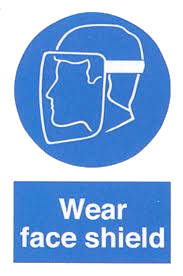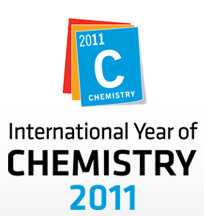- Start page
- NEWly buily paintcan furnace June 2020
- Newly buily barrel furnace June 2018
- Videos from several experiments
- Home made fume hood
- Alloying nickel silver
- Making sphecical domes of silver
- Making a flat ring of silver
Making sodium metal at homeWARNING


Sodium is a very reactive metal. Contact with water may result in explosions due to releasing hydrogen gas. When electrolyzing molten NaOH lye, realize that the hot lye of over 300°C is NASTY STUFF ! Be prepared for (small) explosions of back-reacting of Na metal with water vapor or oxygen at the anode. AVOID ANY CONTACT WITH SKIN AS THE HOT LYE CAUSES SEVERE BURNS !!! The hot lye may even burn through your clothes. So wear face protection, gloves and preferably an apron. When using oil for capturing sodium by the 'carbon-method', be aware that the heat of the furnace may ignite it or its vapors. Also be aware for suckback in this method, when you stop the furnace and as a result the underpressure in the retort sucks back, the oil does not come in the hot retort with explosions as a result ! Just keep the mouth of the pipe a few mm under the oil level and do not use a wide for the oil. ALWAYS wear a face shield and gloves when handling sodium ! Sodium metal is one of the alkali metals which are soft and reactive and have relatively low melting points. They do not occur in a free metallic state in nature as they are too reactive. Sodium is the most common of them and it is a major component of table salt which is a compound with Chlorine. And it is found in Sodium hydroxide which is a strong base and used in lye. PurposeThe aim of the project "Preparation of sodium metal' is that it is possible with simple means to prepare sodium metal. There are hazards involved, see the safety box above. If you as a chemist really need sodium metal you can better buy it via ebay or a chemicals supply store. The aim is not to do shows with throwing Na metal on a pond or even into the loo which may cause bad accidents. There are two possibilities:
Electrolysis
The metal itself is prepared by electrolyzing molten NaCl with the Downs cell and the early 20th century by the Castner process which used electrolysis of molten NaOH. Some amateur chemists who want to make sodium metal use this Castner method on a small scale basis. One guy made a very well-designed replica of the Castner cell which worked very good and had a good yield. This forum topic has an extensive description on this. Anode: 4OH- --> 2 H2O + O2 + 4e There are however some issues when electrolyzing NaOH.
First electrolysis test: could not collect the sodiumBut Later on I made a setup for a simple test. I bought a stainless steel Senseo coffeepad container for a few $$ (8cm diameter, 20cm tall) which Icut off till 7cm tall. This would be the container in which the lye is to be electrolyzed. I surrounded this by two pieces of cell concrete (Ytong) breeze blocks with a cutout for the S/S container. I put two electrodes into it a nickel anode (which is also used in commercial Castner cells) and a copper cathode.Now the party could begin. I put on my face shield and gloves and old winter coat for extra protection. I had a piece of Fermacell ready which I put over the bath during run and only open for pictures and collecting Na metal. Heck wat is is difficult to control the camera with gloves.... First I heated the NaOH pellets till they melted and started the current which was rather constant to 5 amperes. I used an auto light bulb in series to prevent a too high voltage and to exclude the risk of shorting (hence the bright incandescent light). I had made a copper small dipper to collect the Na droplets, but they were floating very quickly over the surface of the lye bath. Sometimes I only saw gas escape at the cathode and no sodium forming at all, so I suspected overheating of the bath (Na dissolves into the lye), so I measured the temperature and sometimes it heated over 340°C so I had to stop the already very low propane flame. Despite watching many Youtube videos showing a guy collecting the Na metal I did no succeed yet. So I stopped and let the lye freeze and cool down and put in into an airtight container to prevent attracting moisture.
Experiment Nov 2013Next attempt: I used a stainless spoon dipper and put a nickel anode and a copper cathode into it. Small balls of lustrous sodium metal were appearing, but hard to collect. As the lye froze, the metal was sometimes still embedded in the lye. I used a copper wire with a piece of gauze in it but that filled with frozen lye. With tweezers I had slightly more success. So going on ... In the Sciencemadness forum I have discussed this.Carbon methodBut by the end of the 19th century the metal was made chemically by heating sodium carbonate with carbon to 1200°C. The reaction is:Over 1000°C this reaction is favorable also because the vapor pressure of sodium is well over 1 bar (boiling point 889°C). For making my own sodium metal I preferred this process. Electrolyzing NaOH or NaCl is a rather tedious job for an amateur chemist because of the Na metal floats on the liquid salts and is not easy to protect the hot molten metal from burning in air. But collecting sodium metal is easier than with the carbon method. 
The setup with the retort in a sandbox The challengesAs the process requires temperatures of over 1000°C you need a furnace which reaches that temperature. That is rather easy if you have a propane burner. See this furnace page for more info. As the sodium metal is released in gaseous state, the vapor should be condensed and collected where it cannot react with air or water. Mineral oil is a good option however it is flammable. |
|
|
| |
|
| |
Videos of experiments
Na2CO3 + charcoal powder experiment 2015 Sep 20
 Sodium vapor was really burning but the inside of the furnace got over 1400°C.
Sodium vapor was really burning but the inside of the furnace got over 1400°C.
Making sodium from NaOH + magnesium metal 2014 Sep 21
 Let magnesium powder react with NaOH and the resulting sodium react with water.
Let magnesium powder react with NaOH and the resulting sodium react with water.
Experiment Electrolyzing NaOH 2013 Nov 9
 I finally got a few balls of sodium metal while electrolyzing liquid NaOH.
I finally got a few balls of sodium metal while electrolyzing liquid NaOH.
Experiment 2012 Dec 17
 The next day I did the same with K2CO3 and charcoal with as result burning K vapor with the purplish magenta flame.
The next day I did the same with K2CO3 and charcoal with as result burning K vapor with the purplish magenta flame.
Experiment 2012 Dec 16
 These are first experiments: capture of the respective metals is not yet done, this is a challenge. But a proof that the metals are reduced is there: the steel tube with the stoichiometric mixture in it heated by a propane flame to 1200°C resulted in a bright yellow flame like a sodium vapor lamp. This is just to show clearly that the sodium is generated but immediately burns in air.
These are first experiments: capture of the respective metals is not yet done, this is a challenge. But a proof that the metals are reduced is there: the steel tube with the stoichiometric mixture in it heated by a propane flame to 1200°C resulted in a bright yellow flame like a sodium vapor lamp. This is just to show clearly that the sodium is generated but immediately burns in air.
Experiment 2012 Jan 8
 This experiment is performed using Mg drillings and NaOH again. After two minutes heating the retort it reacted and I extracted the metal from it and some indeed left. But I could not isolate it properly from the slurry. So I put the pieces into water and it reacted great !
This experiment is performed using Mg drillings and NaOH again. After two minutes heating the retort it reacted and I extracted the metal from it and some indeed left. But I could not isolate it properly from the slurry. So I put the pieces into water and it reacted great !
Na2CO3 + charcoal powder experiment 2015 Sep 20
 Sodium vapor was really burning but the inside of the furnace got over 1400°C.
Sodium vapor was really burning but the inside of the furnace got over 1400°C.
Making sodium from NaOH + magnesium metal 2014 Sep 21
 Let magnesium powder react with NaOH and the resulting sodium react with water.
Let magnesium powder react with NaOH and the resulting sodium react with water.
Experiment Electrolyzing NaOH 2013 Nov 9
 I finally got a few balls of sodium metal while electrolyzing liquid NaOH.
I finally got a few balls of sodium metal while electrolyzing liquid NaOH.
Experiment 2012 Dec 17
 The next day I did the same with K2CO3 and charcoal with as result burning K vapor with the purplish magenta flame.
The next day I did the same with K2CO3 and charcoal with as result burning K vapor with the purplish magenta flame.
Experiment 2012 Dec 16
 These are first experiments: capture of the respective metals is not yet done, this is a challenge. But a proof that the metals are reduced is there: the steel tube with the stoichiometric mixture in it heated by a propane flame to 1200°C resulted in a bright yellow flame like a sodium vapor lamp. This is just to show clearly that the sodium is generated but immediately burns in air.
These are first experiments: capture of the respective metals is not yet done, this is a challenge. But a proof that the metals are reduced is there: the steel tube with the stoichiometric mixture in it heated by a propane flame to 1200°C resulted in a bright yellow flame like a sodium vapor lamp. This is just to show clearly that the sodium is generated but immediately burns in air.
Experiment 2012 Jan 8
 This experiment is performed using Mg drillings and NaOH again. After two minutes heating the retort it reacted and I extracted the metal from it and some indeed left. But I could not isolate it properly from the slurry. So I put the pieces into water and it reacted great !
This experiment is performed using Mg drillings and NaOH again. After two minutes heating the retort it reacted and I extracted the metal from it and some indeed left. But I could not isolate it properly from the slurry. So I put the pieces into water and it reacted great !
Here some pictures taken of 4.6g Magnesium drillings being mixed with 7.5g NaOH and put into the tube retort. The latest three photos show the collecting of the reaction result from the retort and putting it into a jar with lamp oil.
Powered, developed under Linux  and Mac
and Mac  and hosted under Linux.
and hosted under Linux.
This site is best viewed with Firefox, Safari, Chrome and Opera. Using landscape mode on a smartphone gives a better view.
